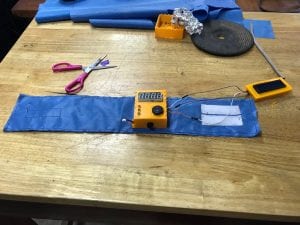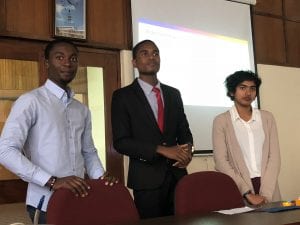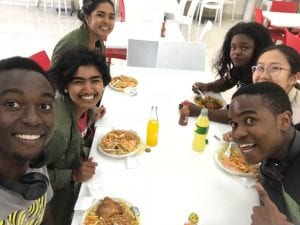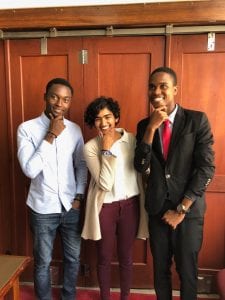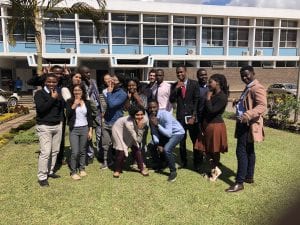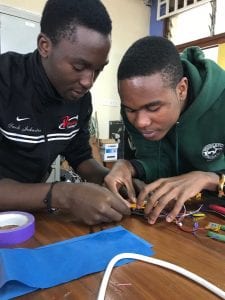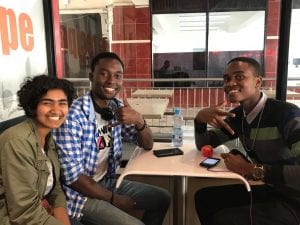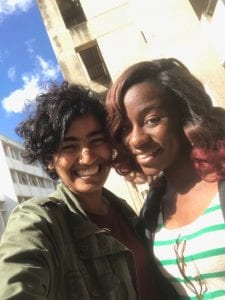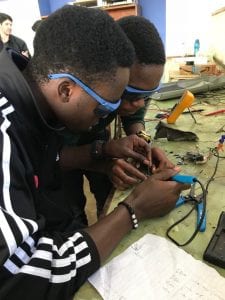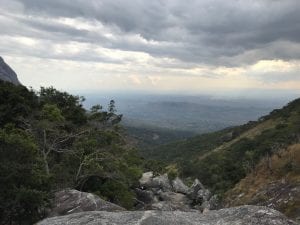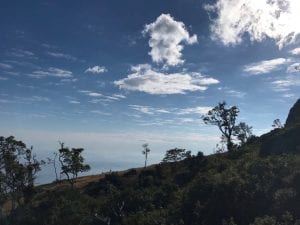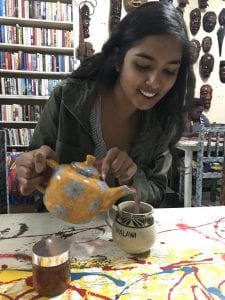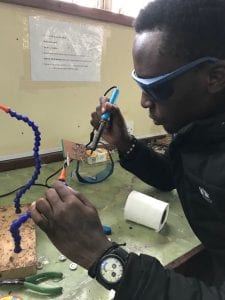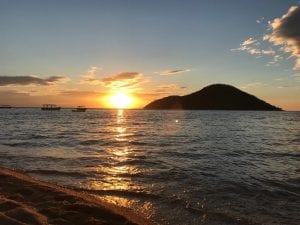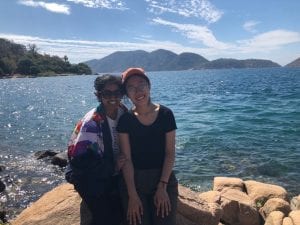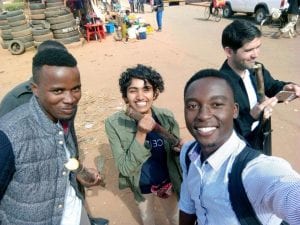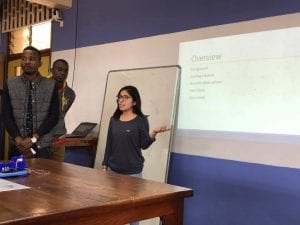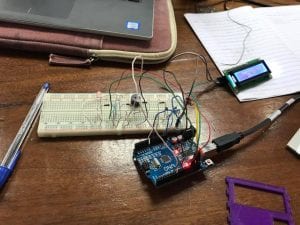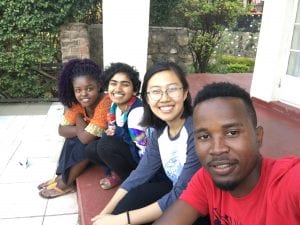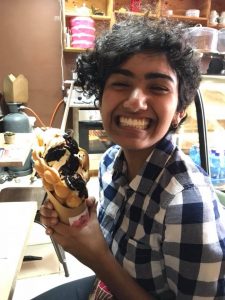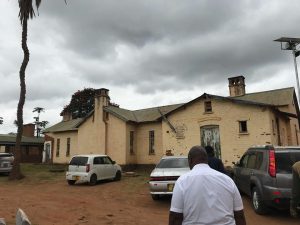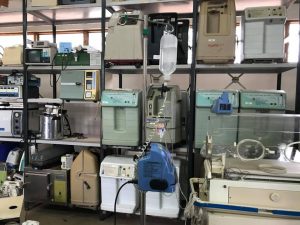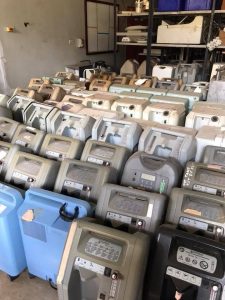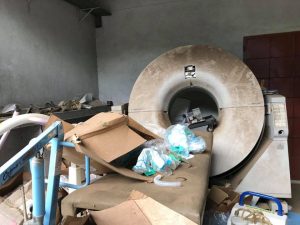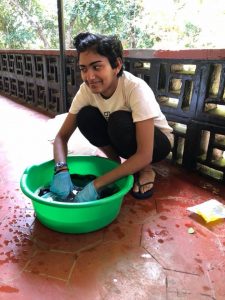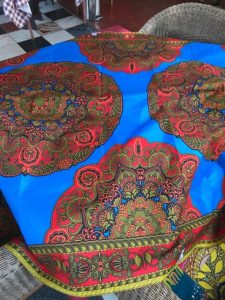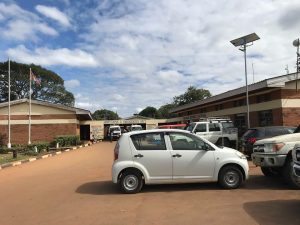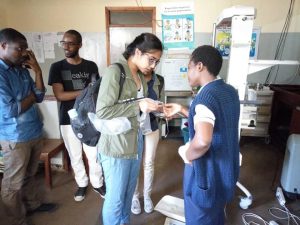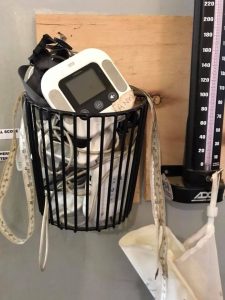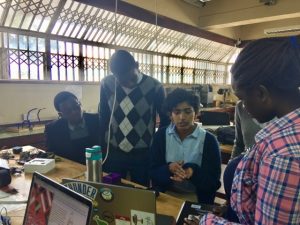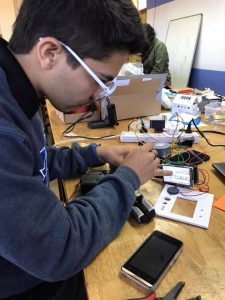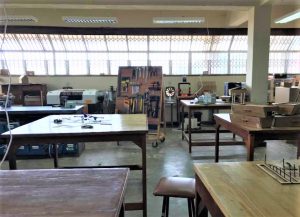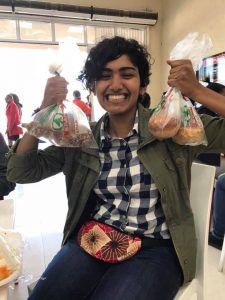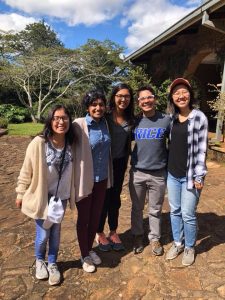Tuesday we did our final presentations. That morning I was scared. On Monday the digital display stopped working all together (thankfully it wasn’t anything wrong with the circuitry) but the temperature wasn’t displaying. So we decided to just attach the LCD display we had just so everyone can see that the temperatures were correct. We went ahead and stuffed the components into the box. Nothing. It all stopped working. So ya Tuesday I was petrified. I was waiting at my table and I checked my phone to see where Tim and Matthews were. And I saw a video the two sent me. It was a video of Matthews turning on our device, completely encased and attached to the armband. And it was working. Monday I was prepared to showcase our semi-fictional device. It’s ok if it wasn’t perfect. But my teammates saw that I was a little disappointed and they snuck the device home with them and got it to work.
The second they walked in the door that morning I gave them the biggest hugs ever. We did it. All the work we put in this past month and we got our device to work. And we were ready to present to the others what we did. Slight roadblock the computer kept freezing during our presentation haha. But otherwise it went amazing.
I cried Wednesday. I knew I would. We came in the day after the presentations to clean up our tables and give Francis and Andrew all the research and documents we had about our device. I took my team out for lunch. Matthews bought me a cute fluffy Pom Pom keychain and Nafe got me these beautiful earrings.
After lunch I thought to myself wow I’m doing a good job of holding myself together. We were about to leave to go back to the lodge and I have yet to cry. But then Timothy did it. I sat down next to him and he looked at me and said “Akshaya you are our team leader and you have also become my sister. And like my real sister I will miss you so much. I am crying in my heart so much thinking of you leaving. But I promise our paths will cross again. And I’m so proud of you.” I started bawling my eyes out. Matthews and Timothy held me and laughed saying that we’ll see each other soon and to not cry. The interns all swarmed around me and gave me hugs. And they sent us off in our taxi. I cried the entire way home. I’m going to miss them so much. My friends I’ve made in Malawi have been so kind and so supportive and so welcoming. They have helped us so much during our time here and they have taught me so much.
I wanted to say thank you to all the people I’ve met in Malawi, especially the Poly interns. Thank you Gloria for being so open and hilarious. Every time I hear your contagious laugh, I laugh too. Alfred, I could listen to you talk forever. I love the stories you tell us. Isaac, you are so focused I hope I can be as driven as you are. Thank you Nafe for being so sweet to us. You made sure we were taken care of every day (like when you got us those beanies so we wouldn’t freeze on the mountain). Thank you Taonga for your kindness. You taught me the handshake that you and your sister do together and that was just so touching. You welcomed us with open arms and I am so grateful for you. Demobre you never failed to make me laugh. You say the funniest things, and you always had our backs. Finally, I wanted to thank my two teammates. Timothy, you are so passionate and knowledgeable about what you are doing. Whenever something wasn’t going our way, you were calm and confident in us. And you taught me a lot about coding and elec. Matthews, you were always so positive and patient. You always took the time to explain things to me, and you were always quick in coming up with solutions when we experienced roadblocks. I loved meeting these amazing people, and I hope I will be able to come back to the Warm Heart of Africa and see everyone again soon!
